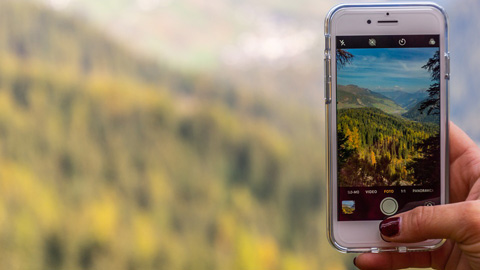Citizens prefer landscapes that combine nature with built infrastructure

12/11/2018
Citizens prefer to enjoy natural landscapes that combine nature with built infrastructure, and that are close and accessible. This is apparent from the results of a pioneering study developed by researchers from the Institute of Science and Environmental Technology of the Universitat Autònoma de Barcelona (ICTA-UAB) in which, for the first time, the preferences of Barcelona's inhabitants have been analysed with regard to landscape aesthetics based on photographs shared on social media.
Land-use policies and landscape planning developed by public institutions are increasingly taking into account ecosystem services, that is, the benefits nature provides to society and that improve health, economy and people’s quality of life. In this context, the non-material and subjective benefits that aesthetic landscape brings to the citizen’s well-being are increasingly important.
The research at ICTA-UAB, carried out in collaboration with the Barcelona Provincial Council, ??has delved deeper into this issue from a novel analysis of the photos of landscapes citizens take and share on social media. The study is based on more than 130,000 photographs taken by over 4,000 users in the province of Barcelona and shared through the Flickr platform.
The results show that, contrary to general belief, the presence of man-made infrastructures in green environments does not seem negatively to affect the aesthetic consideration that citizens have of the landscape. In fact, 57% of the photographs analysed presented "grey" infrastructure such as buildings, roads, bridges, railway lines or lookout points, and the authors of the images sought the contrast between nature and buildings. Specifically, buildings appear in 41.4% of the photos, while forest and sea elements appeared respectively in 28.8% and 28.6% of the photographs. "The study shows us that landscape aesthetics seem less dependent on ‘pristine nature’ than experts and planners assume, while the complex integration of green and grey landscape features plays a critical role", explains Johannes Langemeyer, author of the study together with Fulvia Calcagni and Francesc Baró.
Most of the environments preferred to be photographed by citizens (more aesthetic) are coastal, urban and forest regions near the most populated areas, therefore in the urban and peri-urban areas of Barcelona. In particular, most of the photographs were taken in enclaves such as the Parc de Collserola and Montjuïc, in the peri-urban areas of Barcelona, ??as well as in the coastal areas. In contrast, other inland agro-forestry landscapes, plain-agrarian zones and urban landscapes (with the exception of Barcelona) registered a lower aesthetic preference. Despite the distance from Barcelona, Montserrat was another favourite place. This is due to its tourist attraction and good access by public transportation. And it is proximity and good accessibility by road and public transportation that are critical aspects when choosing which landscapes to enjoy.
The researchers highlight the importance of urban and peri-urban spaces as key providers of landscape aesthetics and stress the need for public institutions to take this into account when designing land-use and landscape planning.
The results of this study have also been used in a pan-European study on Cultural Ecosystem Services derived from Flickr data. Within the framework of this project, an interactive web application (https://maximelenormand.shinyapps.io/AHIA/) was conceived to provide stakeholders with a tool based on the analysis. At the same time, it is oriented towards Flickr users “to give data feedback” through the app, which could become a platform in the future to share experiences using the photos and visual content.